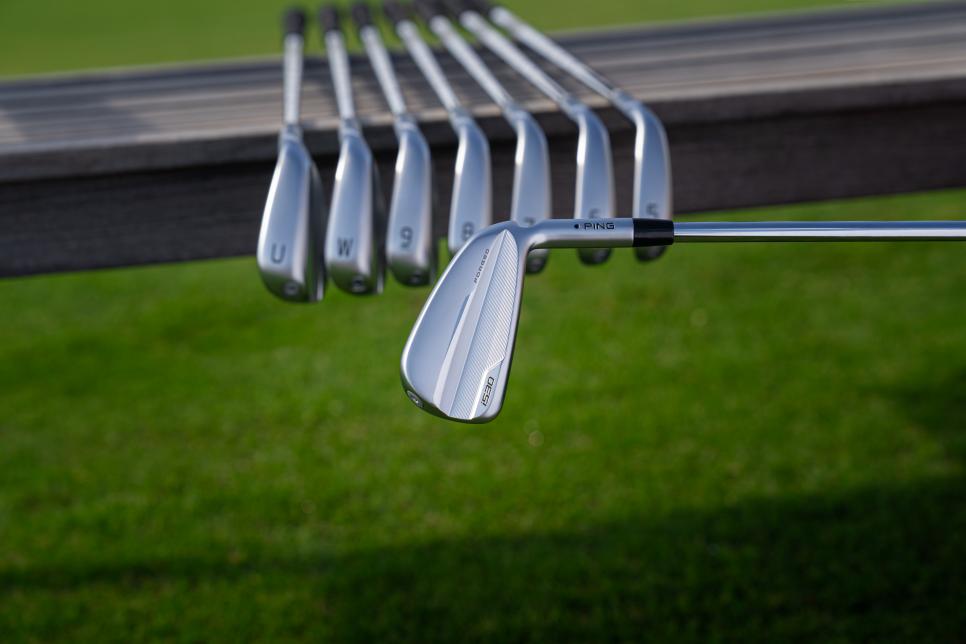WHAT YOU NEED TO KNOW: Ping introduces two new irons, the G730 and i530, designed for distance but geared towards different player types. The G730 is more of a game-improvement offering while the i530 serves better players seeking to regain some lost distance.
PRICE & AVAILABILITY: Available immediately for custom fittings and pre-order, the G730 is $350 per iron (steel), $380 per iron (graphite). The i530 is $380 per iron (steel), $410 per iron (graphite).
3 Cool Things
1. Metalwood performance in an iron. Ping’s first hollow-body game-improvement iron was in 2018 and in the ensuing time the company has improved on its efforts. For the G730 that means an enhanced metalwood-style variable face that uses a special heat treatment to significantly thin (seven percent thinner than the G430 iron) the 17-4 stainless steel face.
The large head and wide sole ups the moment of inertia in both directions (heel-toe, top-bottom) mitigating the negative effects of mis-hits – the kind of shots players in the game-improvement iron category hit with frequency. The rear badge is a 10-piece construction that uses two different plastics and has five bending regions to assist face flex.
2. Shaft story. Attention was paid to the smallest of details in the G730, including the shaft lengths. “The set starts at the 5-iron and we used .75-inch length increments for the 5 and 6-irons instead of .625-inch to get more ball speed and height on longer irons and to blend better with hybrids,” said Ryan Stokke, director of product design for Ping.

3. Good players need speed, too. The players-distance i530 uses a blade-style, hollow structure and high-strength maraging steel face to allow for significant bending of the face at impact compared to a standard cast iron. That bending leads to distance increases, because not only does the ball launch faster off the face, but the face also bends in a way that launches shots higher.
“Maraging steel is used in landing gear systems on aircraft,” said Travis Milleman, design engineer for Ping. “Because that material is so strong, you can go really thin. It’s a constant thickness face but the centre of the face is thinner than i525. It’s almost like a forged metalwood construction. We’re using the whole iron design to get as much movement as you can. As you get thinner in the face you’re taking more mass that you can redistribute, so you’re also getting a boost in moment of inertia [off-centre hit stability].”
An arcing sole cascade aids in the flexing and combines with stronger lofts (29-degree 7-iron, 42-degree pitching wedge) to ensure max height that delivers enough stopping power to hold greens. Four grams of precisely placed EVA polymer improves feel and sound without hindering face flexing.
The aesthetic was cleaned up, too. A shorter blade height had the added benefit of helping drive the CG low while a new machining technique thins the back wall some 40 percent, saving more weight.
The face and grooves are designed with tighter spacing and a geometry that results in an average of four extra grooves on each iron. A hydropearl 2.0 chrome finish combines with the grooves to help ensure lower launch angles with high spin rates.



